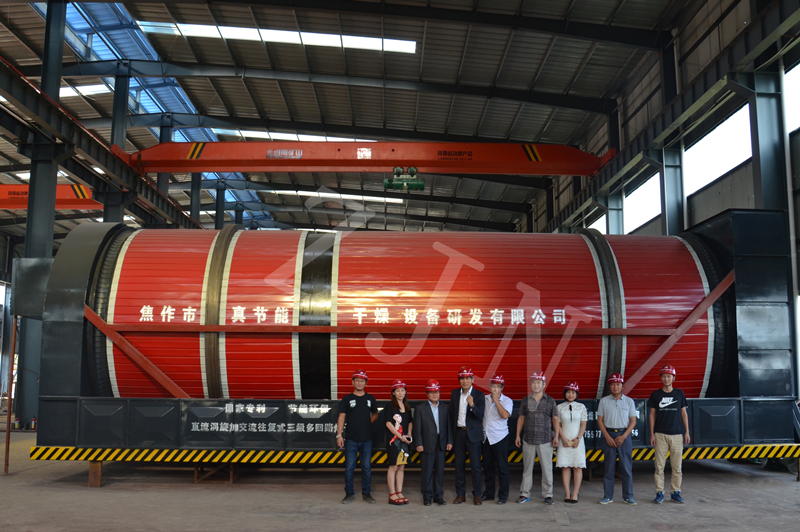Nowadays, a large number of domestic sewage and garbage have been produced with the continuous improvement of people's living standards, resulting in a large number of sludge wastewater. China's environmental protection requirements are higher and higher, people's awareness of environmental protection is also constantly strengthened. The emergence and development of sludge dewatering and drying technology has solved the needs of turning waste into treasure and environmental protection. Sludge dewatering dryer greatly expands the scope of sludge treatment, effectively realizes the harmless, reduction and stabilization of sludge treatment, reduces the harm to the environment and greatly improves The living environment of human beings. The sludge after drying treatment can become one of the important raw materials in cement, industry, building materials and other industries, and broaden the field of sludge resource utilization. At the same time, such as electroplating sludge, chemical sludge, these sludge also contains a certain amount of precious metals and rare elements, which can not be ignored in some industries. Since there are so many benefits of sludge wastewater drying treatment, what are the common sludge dewatering and drying equipment

1. Plate and frame sludge dewatering dryer
Working principle: in a closed state, the sludge pumped by the high-pressure pump is squeezed by the plate frame, so that the water in the sludge is discharged through the filter cloth to achieve the purpose of dehydration. Advantages: low price, good at inorganic sludge dewatering, low moisture content of mud cake. Disadvantages: easy to block, need to use high-pressure pump, not suitable for oily sludge dewatering, difficult to achieve continuous automatic operation.
2. Belt type sludge dewatering dryer
Working principle: the sludge layer is carried by the upper and lower tensioned filter belts, passing through a series of regularly arranged roller pressing cylinders in S shape. The pressure and shear force on the sludge layer are formed by the tension of the filter belt itself, and the capillary water in the sludge layer is squeezed out to realize sludge dewatering. Advantages: low price, widely used, relatively mature technology. Disadvantages: easy to block, need a lot of water cleaning, causing secondary pollution.
3. Centrifugal sludge dewatering dryer
The sludge is fed into the drum by the hollow shaft. Under the centrifugal force generated by high-speed rotation, the sludge is thrown into the drum cavity. Due to different specific gravity, solid-liquid separation is formed. Driven by the screw conveyor, the sludge is transported to the cone end of the drum and discharged continuously from the outlet; the liquid in the liquid ring layer is continuously "overflowed" from the weir mouth to the outside of the drum and discharged by gravity. Advantages: large processing capacity. Disadvantages: high power consumption, high noise, violent vibration; difficult maintenance, not suitable for solid-liquid separation with close specific gravity.
4. Dieselberg sludge dewatering dryer
The fixed ring and the swimming ring are overlapped with each other, and the spiral shaft runs through the filter body. Through gravity concentration and internal pressure of sludge formed by back pressure plate in the process of propulsion, sufficient water is realized, filtrate is discharged from the filter gap formed by fixed ring and movable ring, and mud cake is discharged from the end of dehydration part. Advantages: self cleaning, no clogging, direct dehydration of low concentration sludge; slow speed, power saving, no noise and vibration; full automatic control, 24-hour unmanned operation disadvantages: not good at dewatering of sludge with large particles and hardness; small treatment capacity.
Copyright ©2022 by Jiaozuo ZJN Environmental Protection Equipment Technology Co., Ltd.